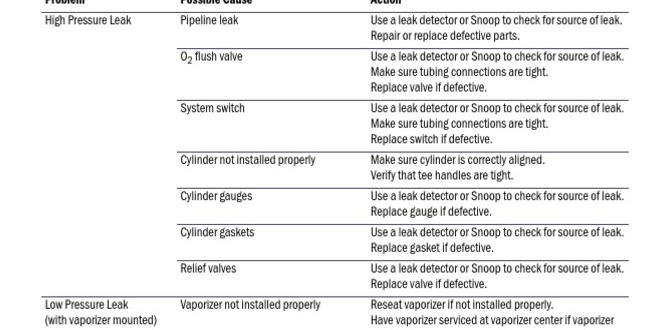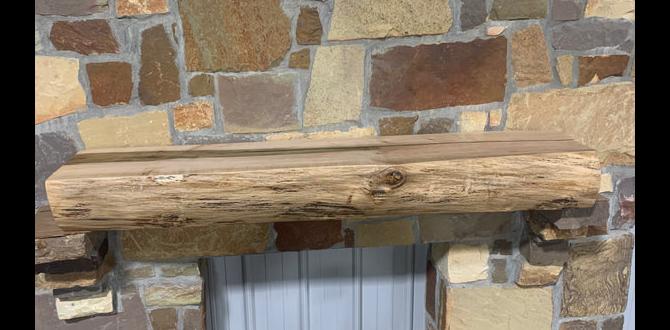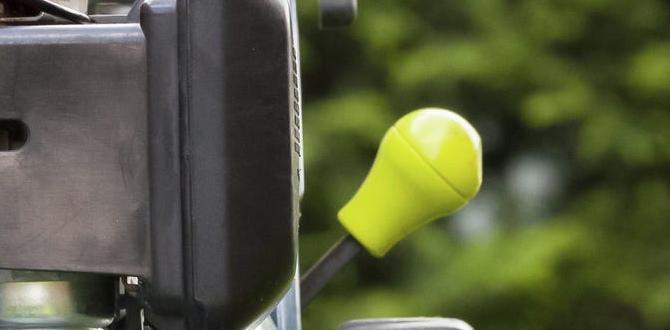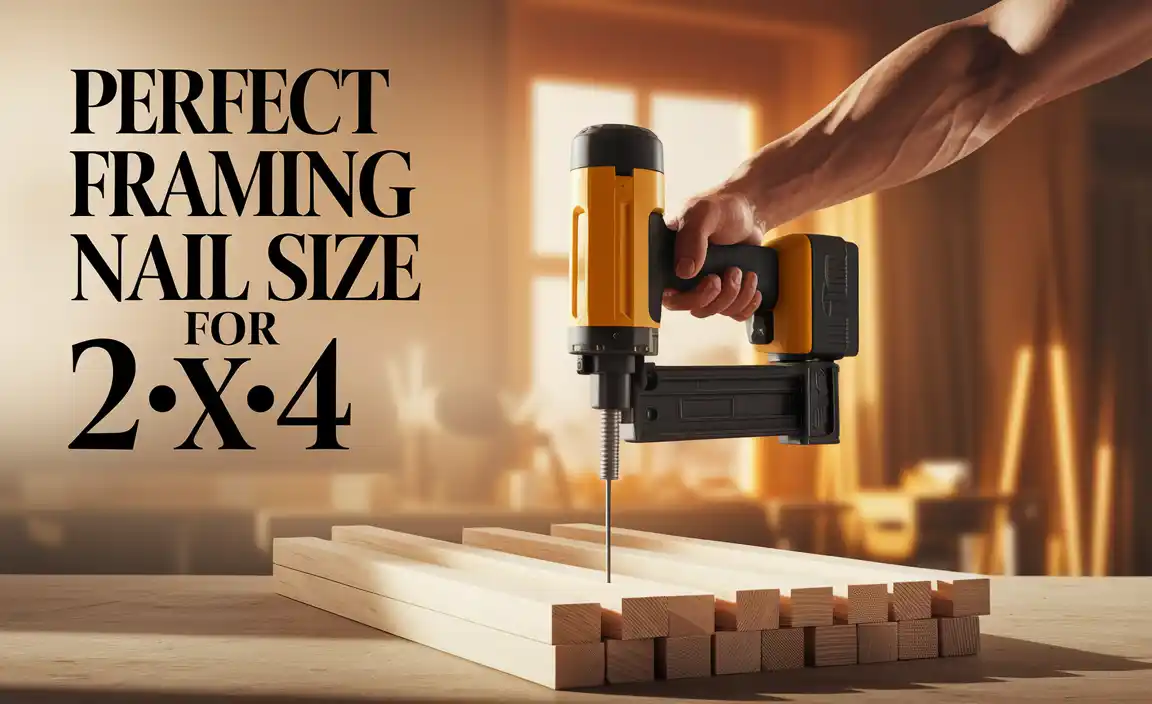Do you own a nail gun? If so, you know how handy it can be for projects. But did you know that proper maintenance keeps it working well? Many beginners overlook this important part. They might assume everything is fine until something breaks.
Imagine you’re halfway through a big project, and your nail gun suddenly stops. Frustrating, right? Regular care can help prevent that. Just like you check a car’s oil, your nail gun needs attention too.
Here’s a fun fact: a well-maintained nail gun can last for years! With the right maintenance tips, you can keep your tool in top shape. Are you ready to learn? Let’s dive into essential nail gun maintenance tips for beginners.
Table of Contents
Nail Gun Maintenance Tips For Beginners: Essential Guide
Nail guns are handy tools, but they need care to last. Regular cleaning is vital to keep them working well. Check for dirt and oil buildup after each use. It’s smart to replace worn-out parts before they cause problems. Storing your nail gun properly also helps. Did you know a well-maintained nail gun can save time and money? Follow these simple tips to ensure your tool works safely and efficiently. Happy nailing!
Understanding Your Nail Gun
Types of nail guns: pneumatic, electric, and cordless. Key components and their functions.
Three main types of nail guns exist: pneumatic, electric, and cordless. Pneumatic guns use air to drive nails. Electric ones rely on electricity, while cordless models run on batteries. Each has its own advantages and uses.
Key parts include:
- Trigger: This is what you press to fire.
- Nose: The part that touches the surface you are nailing.
- Magazine: Holds the nails.
- Motor: Powers the nail gun (in electric and cordless models).
Learning about these types and parts helps you choose the right nail gun for your project.
What are the different types of nail guns?
There are pneumatic, electric, and cordless nail guns.
What are the key components of a nail gun?
- Trigger: Fires nails.
- Nose: Aids in precision.
- Magazine: Stores nails.
- Motor: Drives the firing mechanism.
Essential Safety Precautions
Personal protective equipment (PPE) recommendations. Importance of adhering to manufacturer guidelines.
Using nail guns can be fun, but safety comes first! Always wear Personal Protective Equipment (PPE) to stay safe. This includes safety goggles, ear protection, and gloves. These items protect you from flying debris and loud noises.
Also, read and follow the manufacturer’s guidelines. Each nail gun has specific instructions that help you use it properly. Ignoring these can lead to accidents. Remember, safety is a priority!
What are the essential PPE recommendations?
- Safety goggles: Protect your eyes from dust and flying nails.
- Ear protection: Reduce noise from the nail gun.
- Gloves: Keep your hands safe from cuts.
Routine Cleaning Procedures
Stepbystep cleaning process after each use. Recommended cleaning agents and tools.
Cleaning your nail gun is important for its health. Follow these simple steps after each use:
- First, unplug the nail gun for safety.
- Next, wipe it down with a soft cloth to remove dust and debris.
- Use a small brush to get into tight spots.
- Finally, apply oil to the moving parts for smooth operation.
Recommended cleaning tools include:
- Soft cloths
- Small brushes
- Nail gun oil
Using the right cleaning agents helps maintain your tool’s life. Always check the manufacturer’s instructions for any special recommendations.
What do I use to clean my nail gun?
You can use a soft cloth and a small brush. For best results, apply oil specifically designed for nail guns.
Lubrication Techniques
Importance of lubrication for nail gun longevity. Types of lubricants to use and application methods.
Nail guns need special care to work well. One key element is lubrication. It helps tools last longer and run smoothly. Lubrication reduces wear and tear. This means fewer repairs and lower costs.
Here are some useful lubricants:
- Pneumatic oil: Great for air tools like nail guns.
- Silicone spray: Helps with sticky parts and prevents rust.
- Graphite powder: A dry lube that does not attract dust.
To apply, use only a few drops in the air inlet and on other moving parts. Regular lubrication keeps your nail gun in top shape.
Why is lubrication important for nail guns?
Lubrication is essential for keeping nail guns running smoothly and preventing damage.
How often should you lubricate nail guns?
Lubricate nail guns every few uses, especially after long jobs.
Inspecting Parts for Wear and Damage
Key parts to inspect regularly: filter, driver blade, and orings. Signs of wear that require immediate attention.
To keep your nail gun in good shape, check key parts often. Look at the filter for dirt. A dirty filter makes it hard for the gun to work. Next, check the driver blade. If it’s bent or broken, replace it. Lastly, inspect the o-rings. Worn o-rings can cause air leaks. Watch for these warning signs:
- Strange noises during use.
- Air leaks near connections.
- Poor driving of nails.
Noticing these problems early can save you time and money. Regular checks help your nail gun work well.
What should I inspect regularly in a nail gun?
Inspect the filter, driver blade, and o-rings for wear and tear.
Proper Storage Practices
Ideal storage conditions to prevent damage. Best practices for storing nails and accessories.
Keeping your nail gun safe starts with smart storage. Store it in a dry, cool place to avoid damage. Heat and moisture are like the villains in your nail gun’s story! For nails and accessories, use labeled containers. This keeps everything organized, so you won’t end up using spaghetti-shaped nails. The right storage helps you save time and keeps your tools happy. Here’s a quick table to keep it simple:
| Storage Item | Best Practices |
|---|---|
| Nail Gun | Store in a cool, dry spot |
| Nails and Accessories | Use labeled containers for easy access |
By following these tips, you’ll keep your nail gun and supplies in top shape. Remember, a happy tool means happy projects!
Troubleshooting Common Issues
Common problems: jams, misfires, and air leaks. Stepbystep solutions for effective troubleshooting.
Problems can happen with nail guns. The most common ones are jams, misfires, and air leaks. To fix these issues, follow these steps:
- Jams: Check the magazine. Remove nails and clear any blockage.
- Misfires: Ensure you are using the right nail size. Clean the firing mechanism to avoid errors.
- Air Leaks: Inspect hoses for wear. Replace faulty parts to stop air loss.
Taking care of these problems will help your nail gun work well. Regular maintenance is key for better performance.
How can I fix a jammed nail gun?
Clear the jam by removing any stuck nails and checking the magazine for blockages. Reassemble it and test to ensure smooth operation.
What should I do if my nail gun misfires?
Check the nails you’re using. They must fit perfectly in the gun. Clean the firing mechanism to ensure it fires correctly.
How do I repair an air leak in my nail gun?
Inspect the hoses and connections. Replace any damaged parts to stop air leaks. This fix keeps your nail gun working effectively.
When to Seek Professional Help
Signs that indicate the need for professional servicing. Finding a qualified technician for repair services.
It’s important to know when to ask for help with your nail gun. If you notice any of these signs, it might be time for a professional:
- Strange noises while operating
- Frequent jams or misfires
- Loss of power during use
- Leaking air or fluids
Finding a good technician is easy. Look for someone with good reviews. Ask friends or check online. A qualified expert can help fix your nail gun quickly.
What should I look for in a technician?
Choose a technician who is certified and has experience with nail guns. It is also helpful to find someone who has good customer feedback. This makes sure they can handle your repairs well.
Conclusion
In conclusion, maintaining your nail gun is easy! Clean it regularly to avoid jams. Check the oil to keep it running smoothly. Replace worn parts promptly. Always follow safety guidelines. By taking these simple steps, you can ensure your nail gun lasts longer and works better. So, grab your tools, and start practicing good maintenance today! For more tips, keep reading!
FAQs
What Are The Essential Tools And Supplies Needed For Basic Nail Gun Maintenance?
To take care of a nail gun, you need some basic tools. First, get a can of oil for lubrication. You will also need a clean cloth to wipe away dirt. Plus, have a soft brush to remove dust from the gun. Lastly, a pair of pliers can help if you need to fix anything.
How Often Should A Nail Gun Be Cleaned And Serviced To Ensure Optimal Performance?
You should clean and service your nail gun at least once a month. If you use it a lot, do it every week. Make sure to check for dirt and give it a good wipe. Keeping it clean helps it work better and last longer. Always follow the instructions from the manual too!
What Specific Steps Should Beginners Follow To Clean And Lubricate A Nail Gun Properly?
To clean and lubricate a nail gun, start by unplugging it and wearing safety glasses. Take out the magazine and remove any stuck nails. Use a clean cloth to wipe away dirt and dust. Then, add a few drops of oil to the moving parts. Finally, put the nail gun back together, and it’s ready to use!
How Can I Identify Signs That My Nail Gun May Need Repairs Or Professional Servicing?
You can spot signs your nail gun needs repairs by checking for a few things. If it’s making strange noises or not firing nails, something might be wrong. You should also look for leaks or stuck nails. If it feels heavy or hard to use, it might need professional help. Always remember to keep it clean and check the parts regularly.
Are There Any Common Mistakes To Avoid When Maintaining A Nail Gun For The First Time?
When you maintain a nail gun for the first time, avoid a few common mistakes. First, always unplug it before cleaning. This keeps you safe! Second, don’t forget to oil it properly. A little oil helps it work better. Finally, check the safety features. Make sure everything works, so you stay safe while using it.





